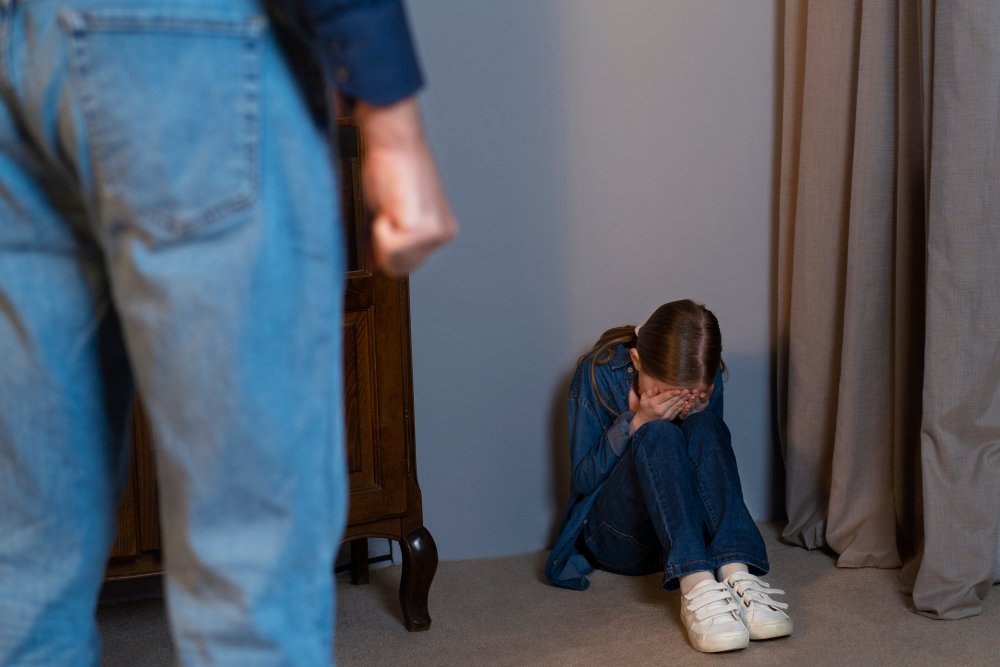Physical Abuse Is Less Likely When Spanking Is Eliminated

University of Michigan researchers reveal that parents in countries worldwide use spanking as a behavior deterrent. However, what they don’t realize is that children are more likely to become victims of physical abuse.
ScienceDirect.com states that regarding the population of abused children, physical abuse could be reduced by up to 33% if spanking were eliminated. Spanking, as per researchers, is an open-handed hit on the child’s behind and not the use of a belt or stick.
International law and cultures vary in terms of the standards of the physical punishment parents inflict upon their kids. Law enforcement usually doesn’t choose to intervene in spanking cases. However, physical abuse cases lead the child to experience a higher risk of injury.
Higher Odds Of Physical Abuse

Spanking, a form of activity that involves physically inflicting pain on an individual, is associated with higher odds of physical abuse. Parents should understand that the elimination of spanking would result in four fewer children exposed to physical abuse. Organizations from around the world are calling for eliminating violence against children. The latest findings support that child welfare advocates continue to discourage parents from using spanking.
Physical Discipline Isn’t Fruitful; It Is Harmful And Ineffective
A new APA resolution has brought out evidence that physical punishment can cause lasting harm to children. The ineffectiveness and dangers of physical discipline against children raise awareness among caregivers, parents, and mental health professionals.
APA’s Council of Representatives adopted The Resolution on Physical Discipline of Children by Parents. This policy relies on strong and sophisticated longitudinal research stating that physical discipline does not improve behavior. Rather, it leads to emotional, behavioral, and academic problems. It prevails even after control of race, gender, and family socioeconomic status.
Hitting children does not teach them about conscience development, responsibility, and self-control. Elizabeth Gershoff, PhD, even mentions that hitting children does not teach them right from wrong. She is an expert on the effects of corporal punishment on children and researched for the resolution. She even added that Spanking gets their attention, and it is not internalized why children ought to do the right thing in the future.
Another point to note here is that children learn from watching their parents. Parents who use physical discipline teach their children to resolve conflicts with physical aggression. Spanking elevates a child’s aggression levels. It is also responsible for diminishing the quality of the parent-child relationship. Physical discipline escalates into abuse that holds long-term impacts.
This resolution promotes effective forms of discipline for parents so that they don’t end up contributing to antisocial behaviors, aggression, and trust issues. Gershoff, a professor at the University of Texas at Austin, has also stated that Children do not need pain to learn. In society, we do not allow aggression among adults. But at the same time, it becomes a sad double standard that children don’t get the same protection against violence.
Better Discipline Models
Large study conducted by Gershoff (Child Development, May/June 2012) reveals that upwards of 80 percent of mothers spank their children between kindergarten and third grade. APA President Rosie Phillips Davis, Ph.D., even mentions that parents raise children the way their parents raised them. She has also shared her opinion that she doesn’t think most people know how to discipline without spanking. People don’t choose to do it differently as they think that alternatives are time-consuming.
The APA resolution has also emphasized the need to adopt effective alternatives, including collaborative conflict resolution, respectful communication, and parental modeling.
Parents of 3- to 5- year-olds usually choose a lot to spank. Parents need to think strategically and plan ahead. There’s a need to find a time-out for certain behaviors. Parents need to give children guidance regarding doing things differently. Time out from the positive reinforcement (TOPR) technique creates an opportunity to regroup and make plans to do better next time.
The APA resolution makes it clear that any perceived short-term benefits from physical discipline can never outweigh the potential detriments. APA joins a number of professional and public health organizations in adopting the resolution. It has been recommended that parents reject all physical discipline.
More training programs on parental discipline for psychologists can help. Over 75 APA members are collaborating to create a toolkit to facilitate conversations about disciplining children. Parents, colleges, civic organizations, and places of worship are adopting multiple modules to include frequently asked questions.
Final Say
Physical discipline makes things worse. Children who are physically punished perpetuate the practice as adults. They think that physical abuse and spanking are not just normal but necessary for raising children properly. Psychologists need to take the opportunity to discuss the facts. Mental health professionals need to cooperate in teaching that we cannot use physical force to discipline children.
Related articles
Benefits and Challenges of Homeschooling Your Child.
Parenting Trends to Embrace in 2024.




